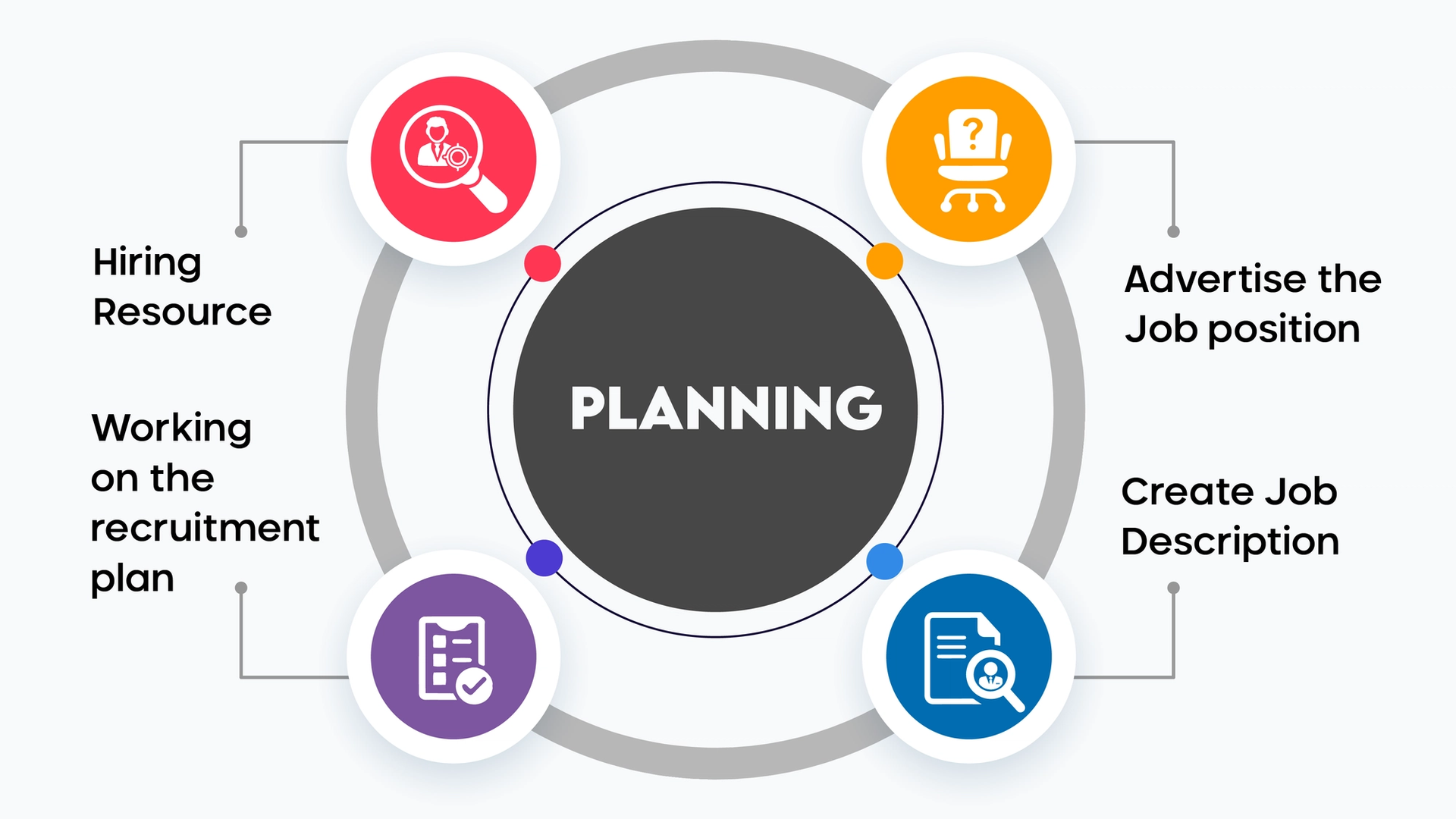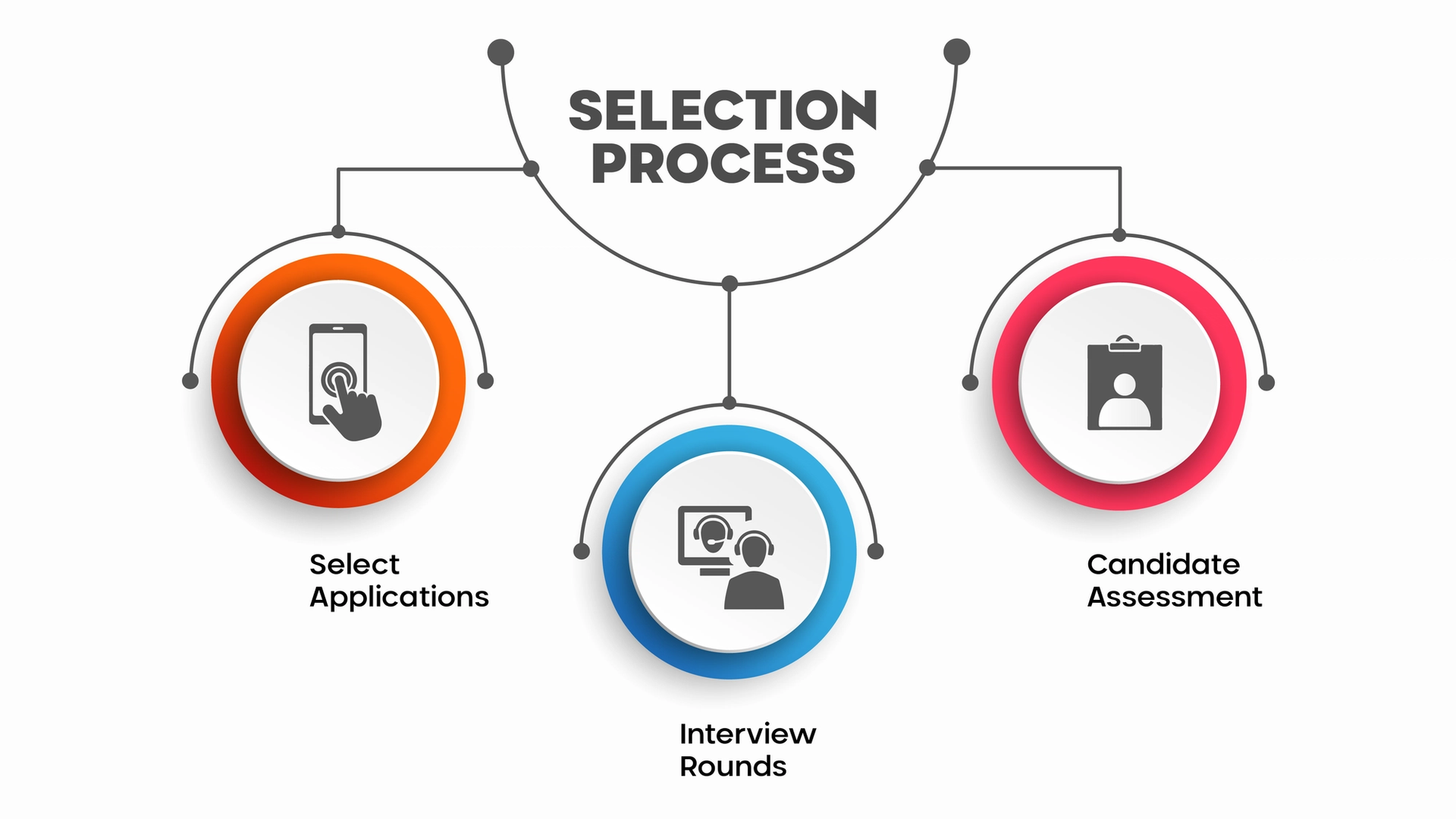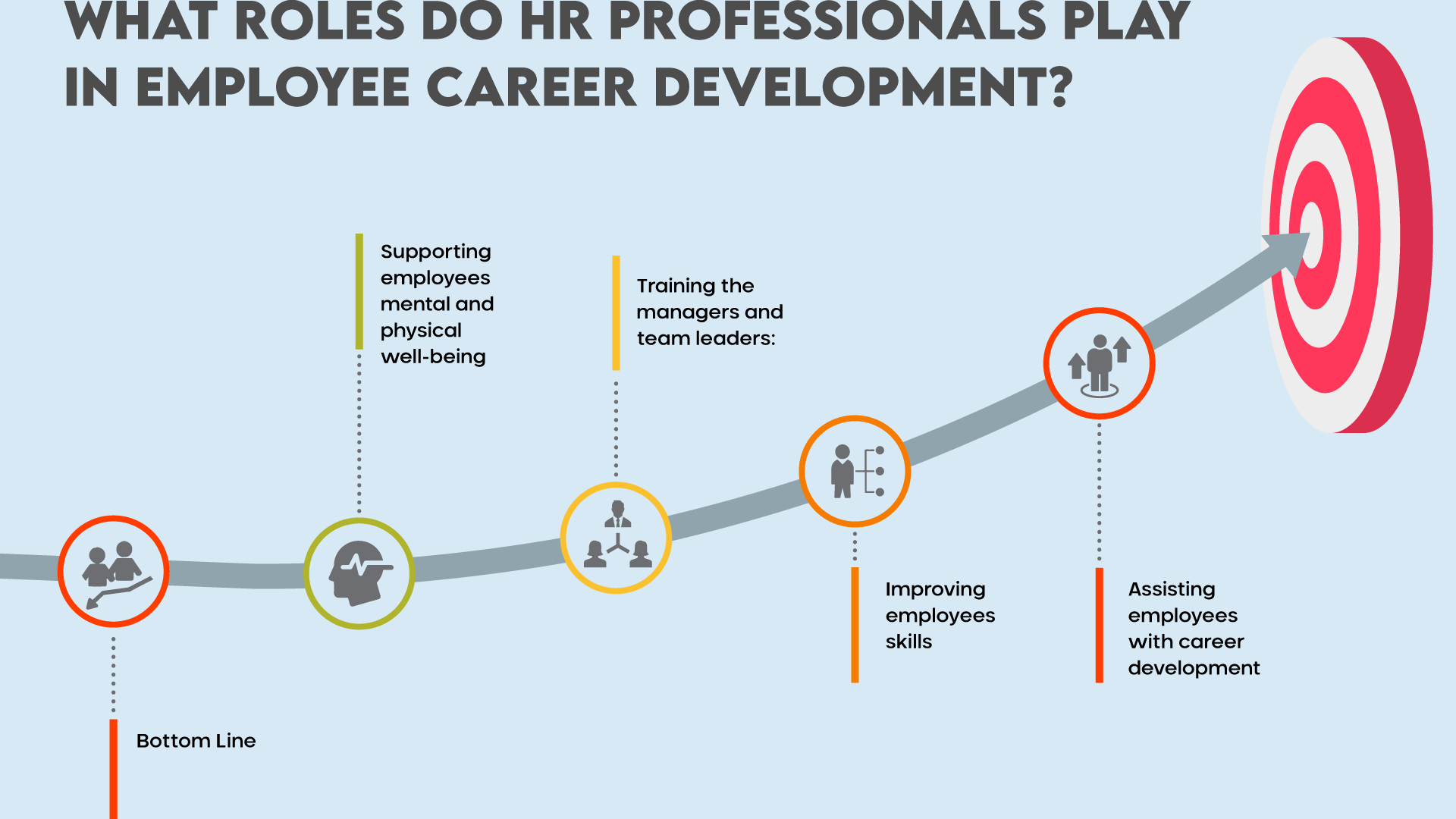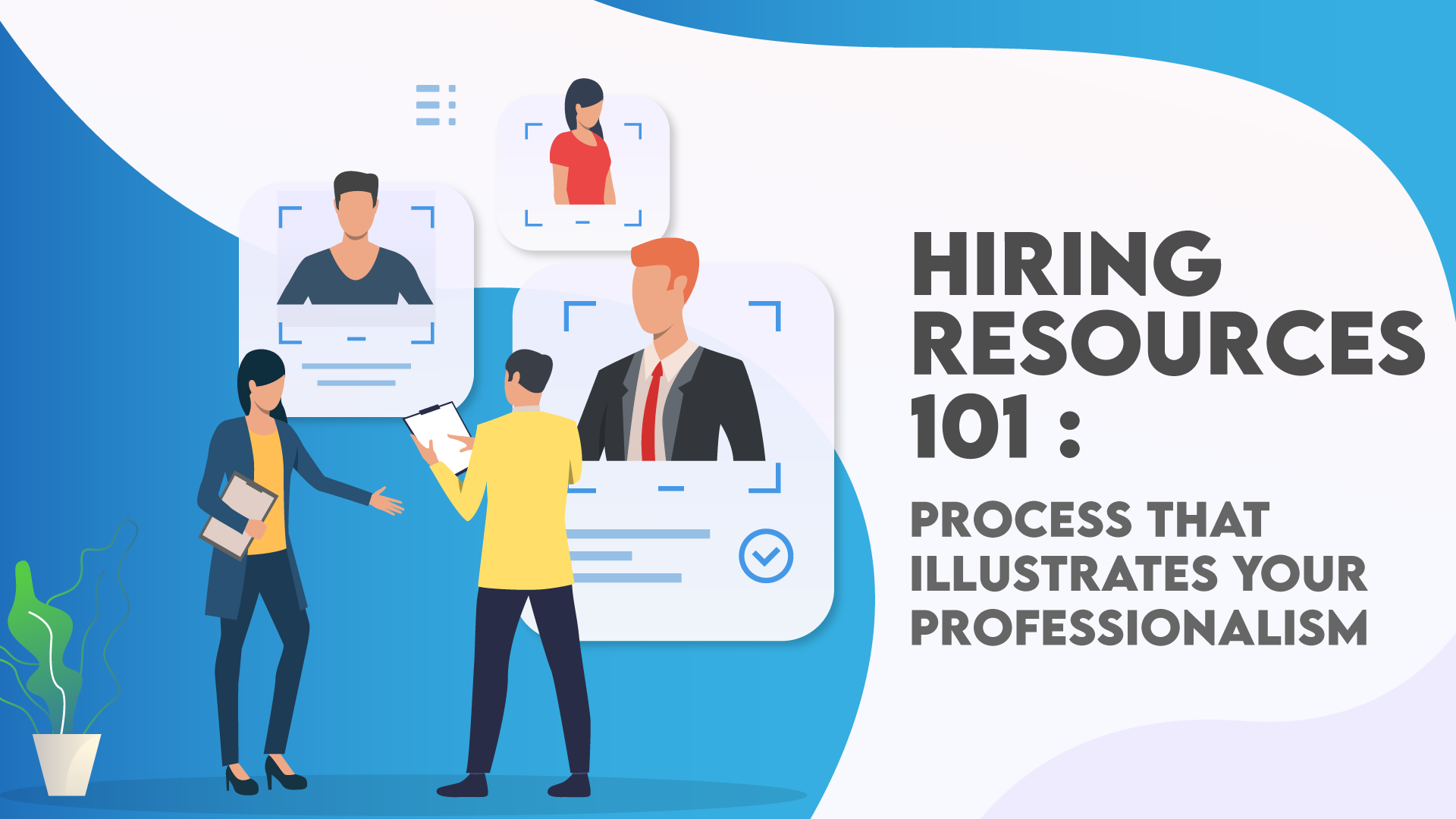Being a human resource professional, you always have to keep an eye for perfection while hiring resources. Whether you want to hire resources for contract work or full-time projects, you have to ensure that they go through a seamless process and become an irreplaceable asset to the company. But many companies have poor human resource management, which affects the quality of their hiring process.
Hence, as a hiring manager or a supervisor, it is crucial for you to implement the best practices while hiring resources in your organization. So let us dive into different aspects of creating effective human resource management for your organization.
Functions of human resource management in hiring resources:
As the name suggests, human resource management primarily focuses on hiring resources through a due diligence process and adding value to the company. But the roles and responsibilities of human resource departments aren't clear to many professionals out there.
This knowledge gap leaves people confused about the roles of the HR manager, the functions of the human resource management team, and several other processes that fall under their umbrella. So let us walk through all these things and see how human resource management functions while hiring resources for the organization.
Roles and responsibilities of the HR department:

Hire Resources:
One of the common tasks of the human resources department is to hire resources according to the company's requirements. But the process isn't simple as it sounds because the team has to go through several resources before hiring the right person for the job. And for this, the hr team needs to analyze the industry, budget, and market value to create a perfect job description.
Once the team is ready with the role details, they start presenting them to the relevant candidates and grab their attention. Remember that hiring resources is a tedious process as it determines the growth of a company over time. So, the team has to be profound in their work to hire the right people.
Handle Payroll Process:
Payroll surely becomes an exciting topic for employees, and the ones who handle every bit of it are the human resource professionals. They accurately handle the employee's payroll by considering the taxes, working hours, and leaves without leaving any stone unturned. Besides, they take care of employee reimbursements, bonuses, and raises promptly to keep everything on track.
Conduct Disciplinary Rules the Company:
It is in the hands of the human resource department to conduct disciplinary actions appropriately and maintain the company's policies. If they fail to navigate the employees inappropriately, they might lose a valuable asset and even harm the company's reputation. But if directed properly, these disciplinary actions can surely result in the employee's success and eventually the organization's success. The best part is that the HR department knows well what actions they should take so that there's no harm to the company and the employee's career.
Handle Company Policies:
Every company has several policies in place which determine their professional attitude. But some policies might not serve any purpose after a certain interval. Hence, it is the HR department's work to handle these policies by updating or discarding them. Sometimes, they also come up with new policies that can add value to the company and employee's work life.
Maintain Employees Records:
No matter big or small, companies have to keep employees' data secured in a database to use it at the right time. It contains the employee's personal details, official details, and emergency contacts that can help companies in times of hiring resources and emergencies, respectively.
The HR department manages this data and helps employers in identifying skills gaps which in turn become helpful in the hiring process. It also helps the employer to analyze their company demographics and comply with the law.
Handle Benefit Analysis:
Whenever a resource starts hunting for a job, the first thing they look for is the benefits offered at a company. That's why most companies are competitive in offering the best benefits to their employees. From an employee's perspective, they would choose a company that offers lesser pay with more attractive benefits like flexible work arrangements, health benefits, a friendly working environment, and many more.
The HR department pays close attention to such benefits and investigates whether they are compatible with the company's working style. They also come up with new benefits on a timely basis to keep the employees attached to the company for a long period.
12 Steps to Hiring Resources Seamlessly:
Planning

- Identity the hiring requirements: Hiring resources begins with a plan that every company possesses for its different positions. Whenever there's a vacant position for any job position, the company starts approaching the HR department to fill the place for better managing the team's workload or sometimes to scale the organizational tasks.
- Working on the recruitment plan: Once the HR department gets notified about the hiring requirements, they start working on their full-fledged recruitment plan. In this case, the identified hiring requirements clearly dictate how the role aligns with the company's business strategy and goals.
- Besides, the organization makes sure that their employees are aware of the new position and its responsibilities to facilitate the hiring process. This step also requires strategizing the entire recruitment, such as who will conduct the interviews, what criteria is required for the job role, how to publicize the vacancy and several other things.
- Create job description: While hiring resources, the HR department provides a clear and concise job description that states the company's info, a prioritized list of job requirements, responsibilities, desired competencies, years of experience, and special qualifications. Some of them also contain the employee benefits and salary offered for the role.
- Advertise the job position: The next step company takes while hiring resources is notifying its current employees about the opening. If someone from the internal team qualifies for the position, then advertising it can stop there. But if the company is seeking external resources, then the HR department specifically mentions this while informing the employees internally.
- While advertising publicly, various tools or resources come in handy for the HR department, which we'll discuss in the next section. These resources help the team find a potential candidate and connect with different talents across the borders. Apart from advertising the job, the HR department also reaches out to desirable candidates through different channels. Doing this gives a chance to candidates who aren't actively looking for a job but can take a step further in their career with this position.
Selection Process

- Select applications: Once the job is posted and potential candidates are contacted, the company starts receiving applications through email or an applicant tracking system(ATS). The HR department then goes through these applications, reviews them, and eliminates the ones that don't meet the job's minimum requirements. Once the received applications are reviewed, the hiring manager identifies the potential candidates and informs them about the interview.
- Interview rounds: Based on the organization's size, one or multiple rounds of interviews are scheduled for the selected candidates. They are as follows:
- Initial interviews are conducted one-to-one between the candidate and the hiring manager, where the focus solely lies on the candidate's communication skills, work history, experience, knowledge, skills, and availability to work with the organization.
- The second round of the interview is with management, executives, or staff members, which can be either one-to-one or group interviews that have the hiring committee. This interview becomes in-depth where the organization tries to know about the candidate's knowledge and skills based on their work experience. The interview can be held either on-site, off-site, or remotely via Skype, Google Hangouts, Zoom, etc.
- A small number of candidates who pass the first and second rounds of interviews are moved forward to a final interview round that involves a conversation with senior leadership. This round includes more in-depth conversations related to earlier rounds of the hiring process.
- Candidate assessment: After the interviews are conducted, or during the interview, the company assigns candidates a skill test. This test helps measure several aspects of the candidate, such as problem-solving ability, personality type, reading comprehension, logical reasoning, emotional well-being, etc.
Hiring

- Background verification: Almost every job posting makes clear that the candidates are subject to a background check. This verification process helps companies know about the candidate's history, such as criminal records, verifying employment history, and running some common information checks. Some positions also require drug testing depending on the job position.
- Reference verification: The selected employees need to provide references from their past employers. These references help the companies verify the information provided by the candidate about their past employment, work history, workplace, and responsibilities.
- Making an offer: Once the background and reference verifications are successfully completed, the HR department chooses some top candidates. They also keep a few backup candidates in case the selected ones decline offers due to failed salary negotiations or get an offer from other organizations. If, in the end, no candidate fulfills the hiring criteria, then the HR department determines whether to start the hiring process from the start. They either alter the process or adjust with the selected candidates for favorable results.
- Hiring resource: If the company finds a potential candidate, they offer them an initial offer letter. It contains the position's benefits, salary, paid time off, joining date, other allowances, working policy, included company assets, and other terms of employment. Negotiations follow the initial offer letter, and hence, the HR department internally determines which elements can be kept negotiable.
- For instance, elements like salary, remote work, and flexible working hours are most negotiable while others are not. Hiring resources progresses after the negotiations are done (if any), and the candidates accept the job offer provided by the company. Next, the company asks them to complete the required paperwork and submit the necessary documents.
- Onboarding resource: Hiring resources successfully doesn't end the hiring process. It also includes onboarding them in a welcoming environment professionally. Doing this helps the employees have a good impression of the company and also makes them ready for a long-term professional relationship with the company. Different organizations have different onboarding processes, but all of them offer the same message to the employees, i.e., a welcoming gesture to begin their new path.
- A common way to onboard a new employee is to send them a welcome letter followed by their seat details; assign them a mentor who can help them settle with a clean desk, team orientation, necessary credentials, required equipment, and task understanding. The mentor will also help them get a clear understanding of the expectations and schedules for a smooth workflow.
Recruiter's toolbox that makes hiring resources easier:

When it comes to hiring resources, people think that the HR department just opens a job position, posts it online, and waits for candidates to hop in. But hiring isn't this simple. According to OfficeVibe, a company takes about 27 days to make a new hire. This stat proves that the HR department has to deal with several challenges while hiring resources because keeping a critical position empty for a longer period can cause serious roadblocks to a company. On the other hand, hiring the wrong candidate can also hurt the company's workflow.
A successful recruiter tries to avoid this gap as much as possible by using the applicant tracking system (ATS) that facilitates the end-to-end hiring process and several other resources to speed up the process. Like any other job, having the right tools in place makes work easier for the recruiting teams in hiring resources efficiently. So let's look at the resources that go in a recruiter's toolbox while hiring resources for the company.
Job Profiles:
The recruitment team knows who should be their next candidate as they work closely with the HR team to create an ideal job profile for every open position in the organization. They ensure that the profile perfectly describes the roles and responsibilities, success metrics, and benefits for the specific job position. And when it comes to hiring resources for open positions, the recruiting team can consult the job profiles to determine the skillset and background the ideal candidates should possess.
Staffing Plan:
A staffing plan serves beneficial to companies that are growing step-by-step. With a clear-cut plan, the companies and recruiters get a perfect understanding of what positions they'll need to fill over the next year. So, if your company has a growth plan but lacks a resource staffing plan, then the leadership team needs to work closely with the HR team to create one. Apparently, the head of each department will know exactly what they need to achieve in the future and who should be their next hire to fulfill it.
Organization Board:
An organization board helps the recruiters to understand the structure of the overall organization and its teams. Hence, they work with the HR department to fill the board with different job profiles whenever needed. With several other uses, this board comes in handy, especially when the recruiting team has to assign a hiring manager to an open position, arrange interviews, and decide a fair salary for the resources.
Professional Networks & Existing Employees:
The recruitment team turns to their existing employees and professional networks while hiring resources by asking for recommendations and referrals. The reason is that the existing employees and professional networks know the benefits of the company and also have a clear understanding of the skills required for the job profile. Additionally, they would also be selective in recommending the resources as these resources will apparently be their office mates in the future.
Salary Structure Document:
A successful recruitment team and HR department have the right salary range in mind, which they utilize while hiring resources. For this, they use a salary structure document that outlines the employee's package based on their years of experience and expertise. They also revisit this document after a certain period to ensure that the employee's pay scale aligns with their current growth and market value. It helps the companies to retain valuable resources instead of losing them to other companies because of underpayment.
Job Description Templates:
Smart recruitment teams use ready-made resources like job description templates to save their time while hiring resources. These templates are pre-filled with the company's information, roles and responsibilities of the job role, and perks of working in the company. So the recruiters just add relevant details into these templates and circulate them on job boards.
Recruiting Websites:
With digital advancements, it becomes easier for companies and job seekers to connect without time or location constraints. For instance, recruiting sites like Monster, Glassdoor, Indeed, and various other platforms make it simple for job seekers to explore new opportunities rather than knocking on doors or waiting for ads in newspapers.
Besides, the new age B2B resource sharing marketplace like ResourceQueue also adds ease to the recruitment process by helping IT companies hire developers as and when the need arises. All of these job boards or recruiting resources turn out to be most effective as they help companies expand their community beyond boundaries and find the top talent suitable to their needs.
Social Media:
Social media has changed the way people pursue their careers. It has not only become a source to socialize but also a platform to showcase skills, reach potential employers, and connect with relevant communities. With the innovative use of social media, hiring managers or recruiters can easily post a job on their social media handles and wait for candidates to hop in.
For instance, Linkedin, which is the world's largest professional network, serves as an excellent platform for companies to post about job opportunities, company information, new product launches, and news about ongoing progress. These features help individuals know a company well and inspire them to be a part of it whenever the chance arises.
Skill assessments:
Before interviewing the candidates, it becomes essential for recruiters to check if the resources possess the necessary skills required for the vacant job position, especially in technical fields. So the professional recruiters ask candidates to go through a skill assessment test that helps them understand the candidate's knowledge, experience, and aptitude without taking much time.
What roles do HR professionals play in employee career development?

Apart from the operational responsibilities, HR professionals also contribute to the employee's well-being and development in different ways. Apparently, employees are essential assets to a company, and maintaining their growth is of paramount importance. Below are four ways in which HR plays an important role in the employee's career development.
Assisting employees with career development:
Stagnation is bad for business, and it's smart to keep your best employees with the company. HR can provide career paths to help guide each employee to a long future within the company. HR can then check in periodically to further guide employees on their career paths.
Improving employee skills:
Every employee has to walk a certain path to improve their career, such as taking skill-based training or enrolling in workshops. Hence, the organizations try their best to provide this educational support to employees with the help of the HR team. This team concisely scans every employee's job role and the career path that's best for their professional growth. Accordingly, they clarify with managers whether the employees can attend training and manage their schedule along with it.
Training the managers and team leaders:
Managers and team leaders need guidance as well. Hence, the HR department provides different training programs and management guidance to them periodically to ensure that they remain fully functional in every scenario.
Supporting employee's mental and physical well-being:
After all, employees are humans! Thus, they need continuous support in different aspects of their life, be it personal or professional. Hence, the HR department keeps offering programs, events, and activities that can support the employees in different stages of their life.
Bottom Line:
Every company has different approaches when it comes to hiring resources but how well they include essential steps and fulfill them shows their professional behavior. Because in the end, it's not just about hiring resources for work; it's also about making them feel appreciated for their will to contribute to the company.


